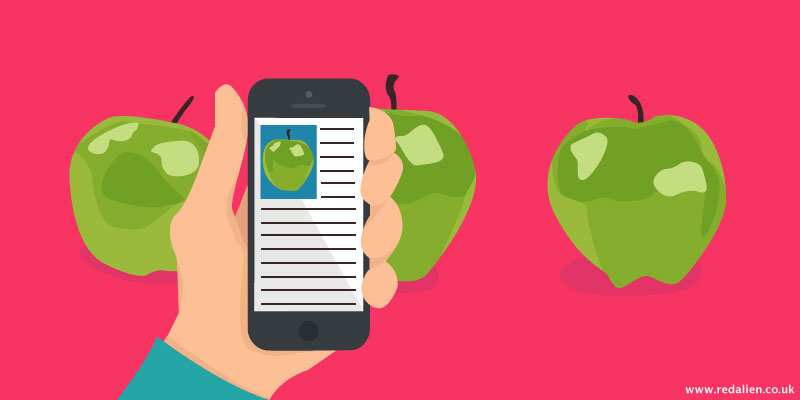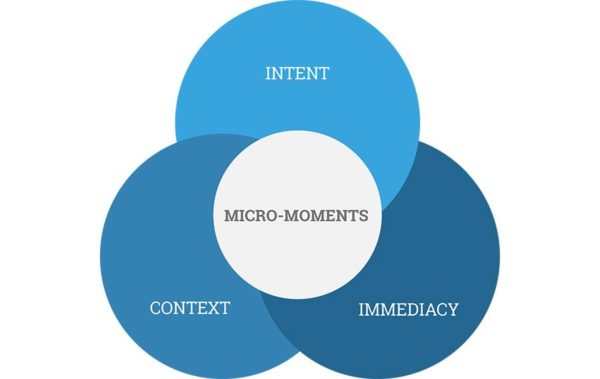Research shows us that 91% of customers will reach for their smartphone or connected device when carrying out any single task. These impulsive behaviours present an opportunity to gain customers, so how do we capitalise on these as digital marketers?
Our dependence on smartphones has now reached a point whereby, for most industries, targeting mobile users is far more important than those using more traditional devices, such as a desktop computer. Mobile plays a key part in everyday life for most of us, and so it’s no surprise that converting a tiny fraction of these users into customers can be hugely profitable.
The key to unlocking the potential in this area is something called ‘Micro Moments’. It’s a fairly new concept, but one that makes absolute sense.
What are Micro Moments?
Google itself describes micro moments as “critical touch points within today’s customer journey, and when added together, they ultimately determine how a journey ends.” We’re already aware just how reliant we are on our mobile phone, so for companies to know when and where their customers are searching for their can be incredibly valuable.
It goes beyond traditional data you may use to track your users. The when and the where is not necessarily time and geographic location (although the latter remains important), instead it’s during which task, in what frame of mind, in what kind of surrounding, and where online are they searching?
Google defines the four key times when brands need to be prepared for consumers. These are the “I want to know”, “I want to go”, “I want to do” and “I want to buy”. Crucially, at these moments customers are searching with an intent to purchase.
If you’re a company that sells kitchen utensils, you may find that micro moments of interest will be for customers in the middle of reviewing a recipe that grab their smartphone to look for a utensil they are missing. “I need a slotted spoon”, for example. Is this an impulsive moment during which they will buy? Most likely.
You’ll want to know what websites they’re on, how likely they are to buy at that exact moment, and how you can take control of that moment and optimise your platform to convert them.
Another example may be for a business selling gym equipment. Perhaps your customer is in post-workout looking for content about new gym workouts or equipment and gear they need. A holiday company would be looking for the “I want to go” type search. All of these present real opportunities for savvy companies to attract and convert new customers.
These are micro moments, and how you identify them and capitalize on the opportunities they present, are now pivotal if you want to grow your business.
Improving the customer journey with micro moments
The best form of preparation for dealing with micro moments is to be one step ahead. You need to try and anticipate what the moments will be, and have a solution in place for them before they occur. Your existing analysis tools can certainly help start to pull this intelligence together, certainly in terms of your most searched for products.
Customers on mobile are always looking for a quick and easy transaction and are not necessarily brand loyal – in fact, 51% of customers have discovered a new company or product when searching on their mobile, so it’s a huge opportunity to attract new customers.
So, to be best positioned to capitalize, you should do the following:
Be there – Mobile searches for “near me” are on the up, Google says they have doubled over the past year and over a longer period the rise in proximity-based searches has skyrocketed. As a result, you need to ensure your local SEO is on point. Do you have your Google business page set up as it should be? Are you optimised for local search? These are key when optimising for local search and mopping up some of the “near me” search volume that micro moments are so commonly about.
A key part of this is being on top of your general site SEO, ensuring that it ranks well for your key products and services. Having strong content is vital, including a potentially good blog or editorial content that helps to add the meat on the bones of your company website.
Optimise performance – Page load speed is one of the most basic yet most important aspects of SEO, and with mobile, it’s more important than ever. If your page takes more than three seconds to load, you’re almost certainly losing customers. In fact, 29% of smartphone users will immediately switch to another website or app if the performance is not good enough, or if the information is too hard to find. Of those, 70% are moving due to slow page load speeds. Page loads speeds are perhaps now more important on mobile than on other platforms such as desktop.
Do everything you can to streamline your website and ensure it loads and performs well on mobile.
Content optimisation / UX – We’ve touched on having relevant content to help your website rank from an SEO perspective, but you also have to carefully consider your content from a user experience point of view. When a customer lands on your website, or more likely the specific product/page they searched for, how will they be greeted? Will they quickly and clearly find what they want without clutter and complications? If not, you need to address this.
Furthermore, simplifying your customer journey for transactions is a must. Crowded or complex checkout pages, or a basket that takes too many steps and clicks to complete a purchase, will put users off completing their transaction. Also, avoid distractions on any pages on mobile – the more reasons a user has to be distracted, the less chance you have of converting them. The aim should always be to make purchases through your website as clear, quick and simple as possible.


